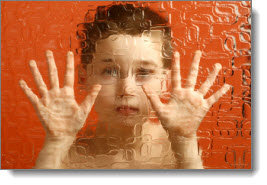 The diagnosis of bipolar disorder in children and adolescents is currently the most hotly debated issue in pediatric mental illness. Is the disorder overdiagnosed or underdiagnosed in this population group? The answer to that question is still very much up for grabs, as there are salient arguments for both positions which are dependent upon comparative studies, clinical biases, whom you ask and personal experiences with diagnosing the disorder. Here’s what won’t change: There will be young people diagnosed with the disorder when they shouldn’t be and not diagnosed when they should be.
The diagnosis of bipolar disorder in children and adolescents is currently the most hotly debated issue in pediatric mental illness. Is the disorder overdiagnosed or underdiagnosed in this population group? The answer to that question is still very much up for grabs, as there are salient arguments for both positions which are dependent upon comparative studies, clinical biases, whom you ask and personal experiences with diagnosing the disorder. Here’s what won’t change: There will be young people diagnosed with the disorder when they shouldn’t be and not diagnosed when they should be.
Underdiagnosis often results from clinical ineptness driven by inexperience with diagnosing bipolar disorder in youth, and an inadequate understanding of the assessment criteria. On the other hand, overdiagnosis is fueled by the engaging storyline that bipolar disorder in children is extremely common, was previously greatly underdiagnosed and presents differently in children because of developmental factors. This has led some clinicians to ignore the DSM-IV definition, thereby pushing the diagnostic boundaries of childhood bipolar disorder far into unfamiliar territory.
The truth is that bipolar disorder is quite difficult to diagnose in children. Many of its characteristic symptoms overlap with other disorders, particularly ADHD. Irritability, agitation and non episodic temper outbursts are symptoms not only of ADHD, but also of oppositional defiant disorder, conduct disorder or anxiety disorder in children. These diagnoses are far too often overlooked nowadays because childhood bipolar disorder has become a diagnostic “fad.”
The Very Latest in Medication Management Practices
The most widely used medications within the mood stabilizer category for treating pediatric bipolar disorder are lithium and Depakote (divalproex). Although numerous studies confirm that these medications are effective, their safety is questionable, due to the life-long nature of bipolar disorder. Long-term lithium use has been linked to quite a few side effects, ranging from acne and cloudy thinking to weight gain, tremors, decreased thyroid function and kidney problems. As a result, children taking lithium should have their blood levels monitored several times a year. Similarly, long-term use of Depakote (divalproex) can cause liver problems and toxicity. Depakote’s (divalproex) potential health risks have led the FDA to order that a “black box” warning be placed on the medication for both pancreatitis and liver failure. For this reason, any child or adolescent taking Depakote (divalproex) should have blood work every three to six months.
Second-generation antipsychotics (Risperdal, Zyprexa, Seroquel, Abilify) also appear to be effective at managing the severe mood swings associated with bipolar disorder in children and teens. But again, benefit-vs.-risk is a concern. These drugs can induce weight gain, sleepiness, parkinsonian and extrapyramidal symptoms, elevated lipid levels, and an increased risk of developing Type II diabetes.
The safety/effectiveness conundrum associated with mood stabilizers and the newer antipsychotics in the treatment of pediatric bipolar disorder will most likely linger until a new, safer generation of compounds is developed. When it comes to treating children, the balance needs to favor minimizing risks. However, for children with serious and potentially dangerous behavioral problems associated with bipolar disorder, the benefits of medication use typically outweigh these risks.
————————————————————
Joe Wegmann is a licensed clinical social worker and a clinical pharmacist with over 30 years of experience in counseling and medication treatment of depression and anxiety. Joe’s new book, www.pesi.com. To learn more about Joe’s programs or to contribute a question for Joe to answer in a future article, visit his website at www.thepharmatherapist.com, or e-mail him at joe@thepharmatherapist.com.
